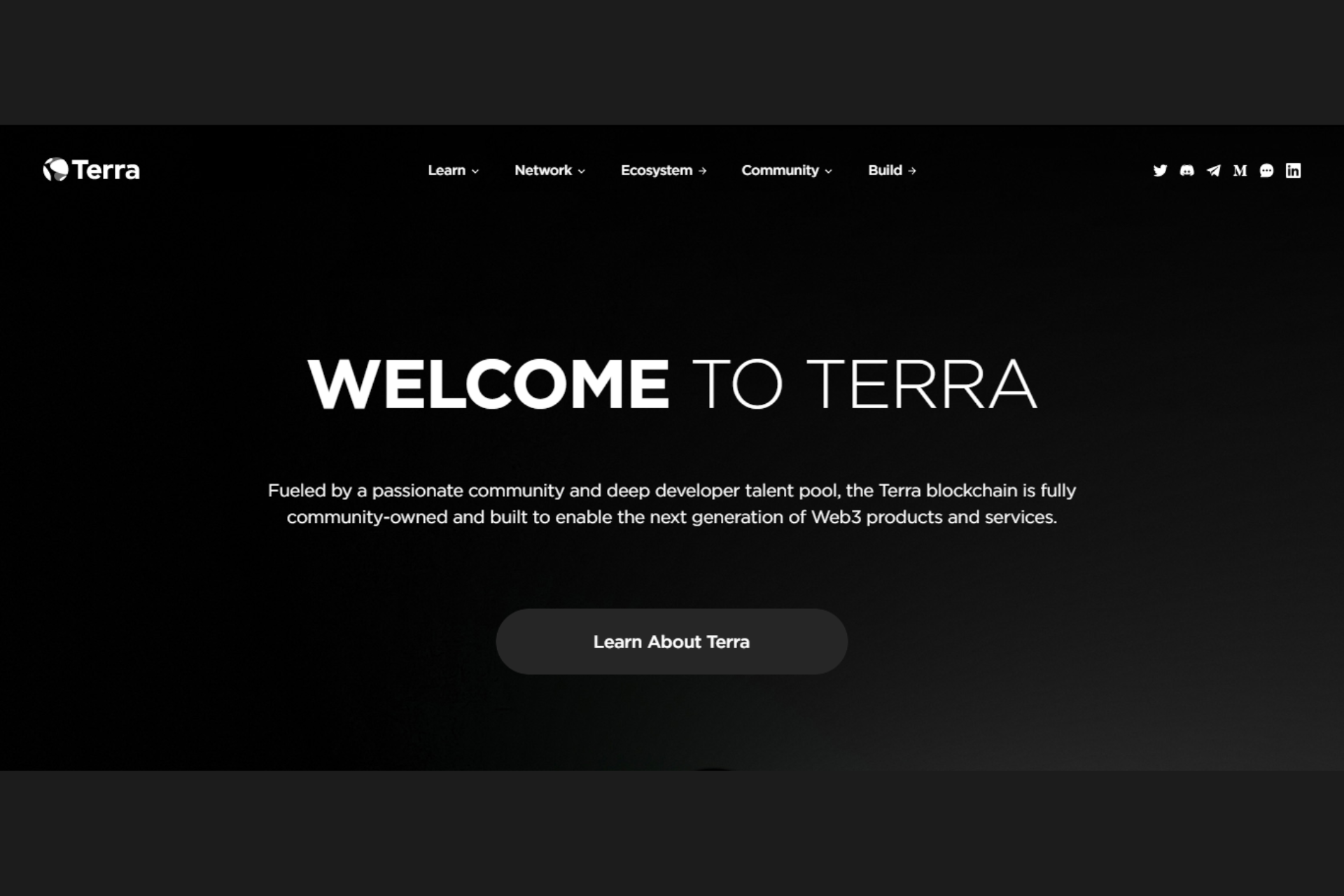What is Terra LUNA?
Terra LUNA, the second largest smart contracts platform behind Ethereum, is a blockchain technology for algorithmic stablecoins that can bridge the fiat-digital currency gap. These stablecoins are linked to ordinary fiat currency. As a result, they provide reassurance to people new to the blockchain industry.
Terra’s stablecoin ecosystem and smart contract technology are focused on providing the next generation of digital money. Terra offers a safe platform for low-cost cross-border transactions. Their user interface is very similar to that of a major finance platform. Terra is dubbed in the crypto world as “Alipay on the blockchain” since many experts believe it can lead the eCommerce business in the future.
What Issues Does Terra LUNA Solve?
Even though the crypto industry’s acceptance rate is rapidly increasing, most users remain hesitant to use cryptocurrencies as an exchange medium due to volatility. Cryptocurrency values can swing by 10-20% in a single day. To address this issue, Terra provides a price-stable digital money ecosystem.

Terra has created internal algorithms to ensure the integrity of its ecosystem’s algorithmic stablecoins. Terra USD (UST) is the platform’s principal stablecoin, supported by smart-contract algorithms and the Luna token. This distinguishes UST from USDT because Terra doesn’t make deceptive claims regarding its reserves.
Terra LUNA has set up a treasury, which functions similarly to a central bank. The platform’s fiscal governance and expenditure regime are managed by its treasury.
How does Terra LUNA work?
Terra is a smart contract platform as well as a stablecoin ecosystem. It implies that developers can create apps on Terra’s blockchain, and other users can use their tokens to buy things and services from these apps.
If someone wants to buy something from an app, they must first burn the LUNA tokens to mint the Terra stablecoin. They can then spend these coins to buy goods. A small number of LUNA tokens are transferred to the community treasury after being burned during the minting process. As a result, the minting process is profitable for the network.
Furthermore, while purchasing something with their stablecoins, users must pay a tiny transaction fee. This transaction cost is split among validators who take part in transaction processing.
Terra Network uses the Proof-of-Stake consensus protocol to handle transactions. To participate in this process, validators must first freeze their LUNA tokens in a specific wallet. Validators can participate in network consensus based on the number of LUNA tokens they own.
What is Terra Stablecoins?
Terra’s stablecoins are similar to BUSD and DAI because you can exchange them for equivalent amounts of fiat currency or other cryptocurrencies. Terra’s stablecoins, on the other hand, are managed via algorithmic means, whereas the BUSD and DAI must keep cryptocurrency reserves or US dollars as collateral. The utility token LUNA backs the stablecoins on Terra’s network. Users can exchange their stablecoins for LUNA at any time.
How does Terra stablecoins (UST) work?
It has already been stated that users must mint their TerraUSD coins by burning the corresponding number of LUNA tokens. So, if the price of LUNA is $100 per coin and a user wishes to mint 100 TerrraUSD coins, they must burn 1 LUNA token. They can follow the same approach if they want to exchange their TerraUSD for LUNA.
As a result, the price of TerraUSD remains consistent because users are compelled to burn their UST tokens if they no longer require them. For the minting process, users must pay a 1 UST conversion fee.
How are Terra Stablecoins’ values preserved?
The intended pegged value of Terra is $1. Arbitrageurs, therefore, view price drops below this level as opportunities and buy UST from the exchange before converting it to LUNA.
For instance, let’s say UST lowers to $0.98 per coin. The arbitrageur will pay $98 for 100 UST coins and convert them to LUNA because LUNA still costs $100 per coin. Thus, they can easily profit $2 from this straightforward deal. $2 can seem like a modest investment, but if someone puts a lot of money into it, they can safely make a lot of money.
The coin’s value returns to $1 when a significant number of people begin purchasing UST owing to rising demand. Similarly to this, when the price of UST rises above $1, arbitrageurs begin converting their LUNA tokens into UST, increasing the currency’s supply and bringing its price back down to $1. As a result, while absorbing the volatility of the UST tokens, LUNA serves as collateral for Terra stablecoins.
LUNA Tokenomics
LUNA fell to 105 in rank in terms of market capitalization because it got hacked, and the price went to $0. They tried to resolve the issue, but we will see how it will perform in the future. LUNA has a circulating supply of 127 million coins. It has a total supply of 1 billion coins. If the supply exceeds the maximum limit, the Terra platform will burn the LUNA tokens to keep the level.
Token utility
Staking
Holders of LUNA tokens can stake their tokens to serve as validators. The stablecoins’ volatility is also maintained using staked tokens.
Governance
Holders of LUNA tokens can vote or make proposals to help the platform grow.
Gas fee
When a user executes a transaction on the Terra network, the user must pay a portion of the transaction fee in LUNA tokens.
Collateral
By absorbing the volatility of stablecoins, LUNA acts as collateral.
Conclusion
Terra was the second most popular smart contract platform. It has created a platform of algorithmic stablecoins that had the potential to improve the eCommerce sector significantly. After the hack, everyone stopped believing in Terra, and it fell hard. We hope they will fix all of their issues and return to their rank in the future. We’ve provided every information regarding the Terra network and how Terra Stablecoins function. Please get in touch with us if you require any additional information on Terra (LUNA).











